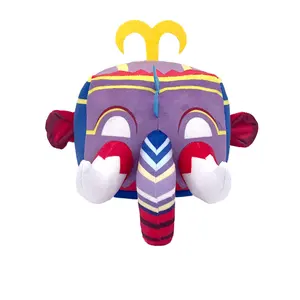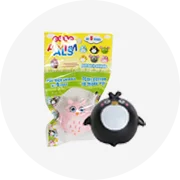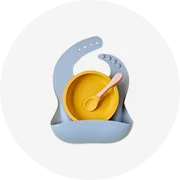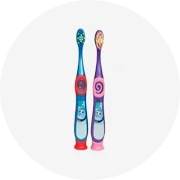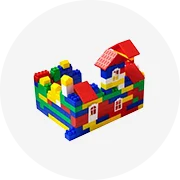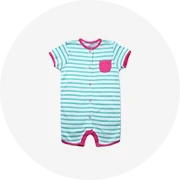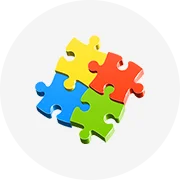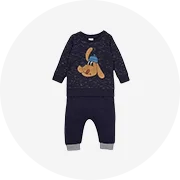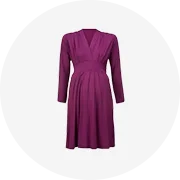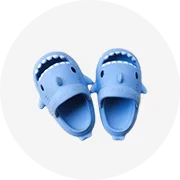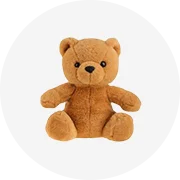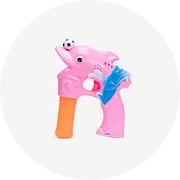Popular in your industry









Related Searches:
























Top categories
About montessori materials
In the quest to cultivate young minds, the Montessori Method stands out as a beacon of child-centered education, harnessing the power of specially designed materials to unlock the rich potential within each child. This comprehensive guide delves into the heart of Montessori materials, offering educators a key to a world where learning is not just an activity but a sensory-rich journey towards independence and cognitive growth. From the tactile curves of Sandpaper Letters to the logical construction of Number Rods, these tools are not mere playthings but the building blocks of a lifelong love for learning. Join us as we explore the transformative power of Montessori materials and how they contribute to the holistic development of children, shaping the curious minds of today into the innovative leaders of tomorrow.
The Montessori Method: A Primer
The Montessori Method, recognized for its unique approach to education, emphasizes individual learning and the fostering of independence. It is a pedagogy that nurtures a child's cognitive, social, emotional, and physical development. This educational approach encourages empathy, a passion for social justice, and a lifelong love for learning. Montessori educators are trained to observe children within a specific age range and introduce them to appropriate lessons and materials based on each child’s interests and developmental progress. The Montessori classroom is a thoughtfully prepared environment where children are guided by their curiosity, leading to intrinsic motivation and sustained attention. The method's distinctive learning materials are designed to teach single skills or concepts in a logical, developmentally appropriate progression, aiding the child in developing an abstract understanding of the concept. Multi-age classrooms are a staple of this method, allowing children to learn from one another, fostering a community where cooperation triumphs over competition.
Montessori Materials: Building Blocks of Learning
Montessori materials are unique educational tools that facilitate key learning outcomes for children through hands-on experience. Each of these materials is crafted to teach a specific skill, allowing for focused practice and mastery. The philosophy behind these materials is rooted in the belief that learning is most effective when it is self-directed and tactile. This approach to education emphasizes the importance of touching and handling objects as a means of engaging the child's intelligence.
These learning aids are introduced systematically, starting with the simplest concepts and gradually moving towards more complex ones, matching the child's developmental pace. The structured progression ensures a solid foundation of knowledge, built layer by layer. Montessori materials are not just about academic learning; they also encourage exploration and independent problem-solving, which are critical skills for lifelong learning.
Key examples include the Sandpaper Letters, which integrate muscular and visual memory to teach letter shapes and sounds, and Numbers and Counters, which solidify the understanding of numbers and quantities. These materials are typically presented by a trained educator who guides the child through a Key Lesson before encouraging independent work. This methodical approach ensures that children engage with the materials in a way that is both educational and respectful of their natural learning processes.
Types of Montessori Materials Available on Alibaba.com

Exploring the variety of Montessori materials available on Alibaba.com reveals a treasure trove of educational tools designed to enhance learning through hands-on experience. Among these, Language Montessori Materials stand out, offering a tactile approach to literacy with items like the Moveable Alphabet, which encourages the development of reading and writing skills. Educational toys such as Baby Visual Stimulus Cards cater to the visual senses of infants, providing high-contrast imagery to stimulate early visual and cognitive development.
Cognitive puzzles and games, including Animal Cards and English Learning Flashcards, support language acquisition and animal recognition, promoting memory and matching skills. For fine motor development, the Busy Book with Pen Control Training and Learning Flashcards equipped with an erasable pen, offer interactive ways for children to practice writing and drawing. The Bamboo Creative Art and Craft Kit allows for artistic expression and fine motor skill enhancement through crafting with glass mosaic tiles.
Sensory and practical life skills are addressed with materials like the Busy House Activity Sensory Toy, which includes locks and latches to navigate, aiding in the development of problem-solving skills and hand-eye coordination. Mathematics is made tangible with Numerical Rods and Counting and Matching Digital Shape Games, which lay the groundwork for numerical understanding and logical thinking. These Montessori materials, crafted primarily from wood, provide durable and sustainable options for educational environments, fostering a range of developmental milestones from sensory exploration to academic foundations.
Sensorial Materials: Engaging the Five Senses
Montessori sensorial materials are meticulously designed to sharpen a child's sensory perceptions, which are fundamental to the Montessori educational approach. These materials engage the five senses—touch, sight, smell, taste, and hearing—aiding in the development of a child's cognitive skills. Each piece of sensorial equipment serves a specific purpose and is introduced at an appropriate age to maximize its developmental benefits.
For instance, the Cylinder Blocks and Pink Tower are classic examples that enhance visual discrimination of size, while the Brown Stair and Long Red Rods focus on dimension and length. The Knobless Cylinders and Color Tablets further refine visual perception and color recognition. Touch Boards and Touch Tablets are utilized to develop tactile senses, allowing children to distinguish textures and weights.
These materials are not just toys but tools that guide children through a learning process. The Montessori method emphasizes the importance of the 3-period lesson, which is a structured approach to introduce and reinforce concepts. This methodology, along with the sensorial materials, encourages children to explore, understand, and connect with their environment in a profound way.
Practical Life Tools: Fostering Independence
Montessori Practical Life activities are foundational in the Montessori primary curriculum, designed to engage young children in tasks that promote independence and interaction with their environment. These activities are typically introduced to children as they enter the Montessori setting, capitalizing on their sensitive period for coordination and movement. Practical Life activities encompass a range of tasks that are not only enjoyable but also serve to build a child's confidence and self-reliance.
The essence of Practical Life activities lies in their adaptability, allowing educators and parents to tailor these tasks to meet the individual needs of each child. Whether it's preparing a simple snack or learning to care for their surroundings, children derive immense satisfaction from these activities. By breaking down self-care and environmental care tasks into manageable steps, Montessori materials facilitate a child's successful mastery of these skills.
These activities are not just about the tasks themselves but also about nurturing a child's ability to function independently and with respect for their environment. The Montessori approach to Practical Life activities is a testament to the method's holistic view of child development, emphasizing the importance of real-life skills alongside academic learning.
Language and Mathematics: Foundations for Academic Success
Montessori education is renowned for its unique approach to learning, where materials play a pivotal role in developing foundational skills in language and mathematics. The materials designed for these subjects are meticulously crafted to aid in the understanding of abstract concepts through tactile and visual experiences. For instance, the 'Introduction To The Decimal System' and 'Golden Bead Material' sets are instrumental in introducing the decimal system to young learners. These sets typically include individual beads made of various materials like glass or nylon, offering a sensory dimension to numerical comprehension.
In the realm of language, Montessori materials are equally transformative, providing tangible means to explore the structure and use of language. These resources are not just about learning to read and write but also about appreciating the nuances of language. The materials available cater to a range of skill levels, ensuring that educators can find appropriate tools for their classroom settings. From individual beads that represent different numerical values to cubes of 1000 that demonstrate the concept of large numbers, these materials bridge the gap between concrete experience and abstract thought, which is essential for academic success in mathematics and language.
Cultural Materials: Exploring the World
Montessori Cultural Materials serve as a bridge for children to explore and understand the diverse aspects of the world around them. These materials encompass a range of subjects including geography, history, science, and art, providing a holistic educational experience. For instance, Puzzle Maps are tangible tools that allow children to physically interact with the geography of the world, enhancing their understanding of different countries and continents. The Montessori Beads introduce mathematical concepts, aiding children in grasping numbers and basic arithmetic through physical manipulation. Triangle Boxes offer insights into geometry, enabling students to experiment with shapes and forms, fostering patience and concentration. The Binomial Cube, a sensorial material, introduces children to algebraic concepts in a visual and tactile manner, laying the groundwork for more advanced mathematical learning. Classification Cards are another key component, aimed at enriching vocabulary and categorization skills, preparing children for future studies in various subjects. Each of these materials is designed to engage children in active learning, encouraging independence, concentration, and a deep-seated curiosity about the cultural aspects of their environment.
Selecting the Right Montessori Materials for Your Classroom

Selecting the right Montessori materials for your classroom involves understanding the unique educational needs and developmental stages of children. Montessori materials are designed to be presented in sequence, from simple to complex, aligning with the child's growing abilities. They are crafted to teach one skill at a time, allowing for focused practice and mastery.
When choosing materials, consider the progression of difficulty and the individual interests of the children. A trained educator typically introduces these materials with a Key Lesson, encouraging independent exploration thereafter. It's crucial that children have the opportunity to work with the material at their own pace and return it to its place, fostering a sense of order and responsibility.
Materials such as Sandpaper Letters and Numbers and Counters are foundational, supporting the development of muscle memory for letter shapes and understanding of numerical concepts through tactile and visual engagement. The Parts of the World Puzzle aids in geographical awareness by introducing the shapes and names of continents and their interrelations. These materials are not just educational tools but stepping stones to build a layered understanding of complex concepts through hands-on experience.
Advantages of Sourcing Montessori Materials from Alibaba

The testimonials from various educational institutions highlight the effectiveness and satisfaction with Montessori materials sourced, which can be indicative of the advantages of sourcing from platforms like Alibaba. Educators have noted the materials' ability to aid in the progression of reading through methods like the Pink Language Series, emphasizing the practicality of these tools in fostering reading fluency through C-V-C word practice. The appreciation for the care in preparation and packaging suggests a level of professionalism and respect in the supply chain. Additionally, the repeated mention of the quality of the materials and customer service reflects a reliable purchasing experience. The emphasis on affordability and aesthetic appeal of the materials suggests that sourcing from such platforms can offer a balance of cost-efficiency and visual engagement, which is crucial for the Montessori learning environment.
Conclusion
In conclusion, Montessori materials are more than just educational aids; they are the catalysts for developing independent, confident, and knowledgeable individuals. The Montessori Method, with its unique materials, has stood the test of time, proving its effectiveness in fostering cognitive, social, and practical skills. From the sensory engagement of the Pink Tower to the cultural revelations of Puzzle Maps, each material is a step in the child's journey of self-discovery and academic excellence. Educators and parents alike must thoughtfully select these tools, ensuring they align with the developmental needs and interests of each child. Sourcing from Alibaba offers a plethora of advantages, from quality and affordability to a diverse range of options, making it easier for educators to equip their classrooms for success. As we have seen, the right Montessori materials can set the stage for a child's love of learning, paving the way for a future where they are not just learners but thinkers, innovators, and responsible citizens of the world.



